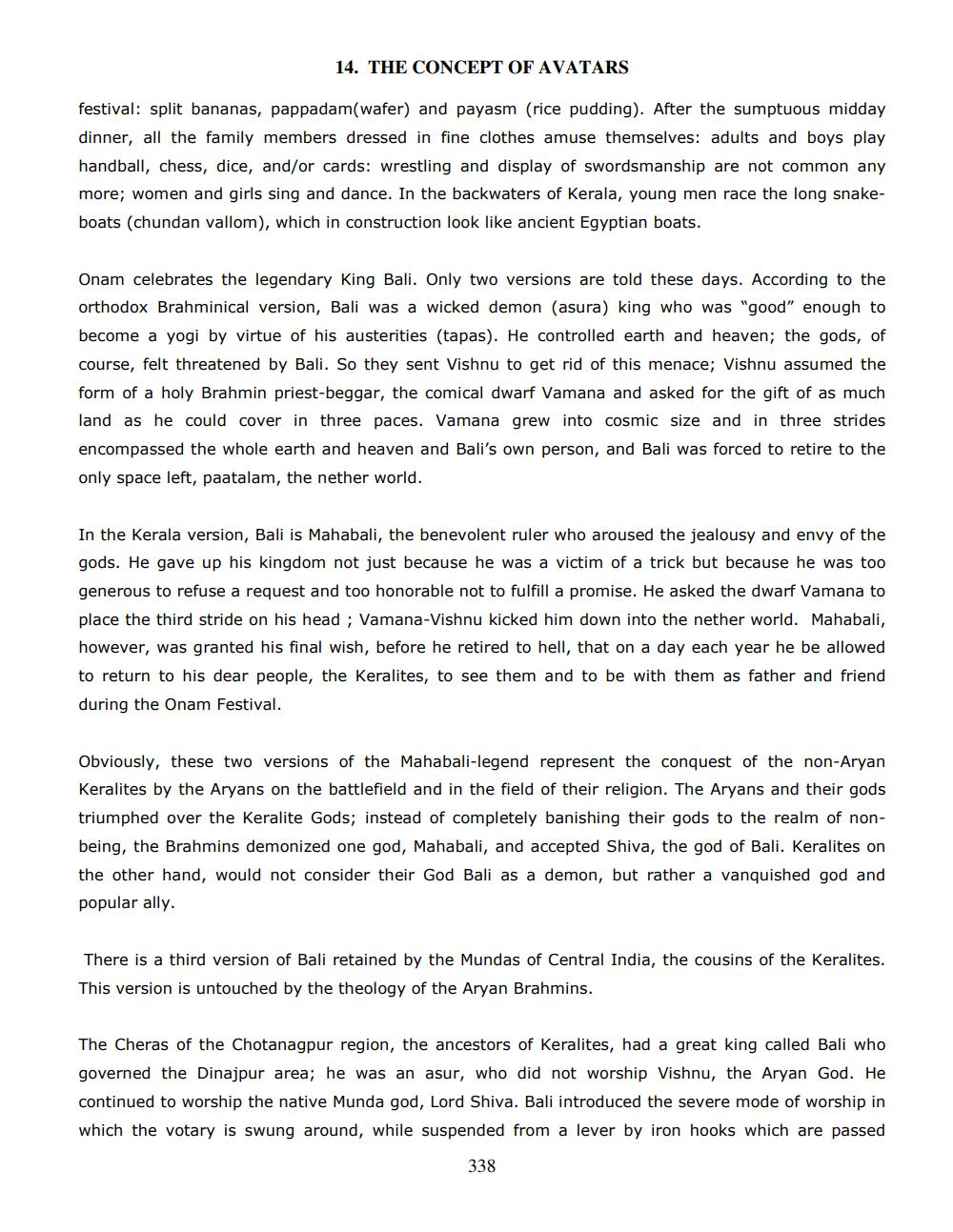________________
14. THE CONCEPT OF AVATARS
festival: split bananas, pappadam(wafer) and payasm (rice pudding). After the sumptuous midday dinner, all the family members dressed in fine clothes amuse themselves: adults and boys play handball, chess, dice, and/or cards: wrestling and display of swordsmanship are not common any more; women and girls sing and dance. In the backwaters of Kerala, young men race the long snakeboats (chundan vallom), which in construction look like ancient Egyptian boats.
Onam celebrates the legendary King Bali. Only two versions are told these days. According to the orthodox Brahminical version, Bali was a wicked demon (asura) king who was "good" enough to become a yogi by virtue of his austerities (tapas). He controlled earth and heaven; the gods, of course, felt threatened by Bali. So they sent Vishnu to get rid of this menace; Vishnu assumed the form of a holy Brahmin priest-beggar, the comical dwarf Vamana and asked for the gift of as much land as he could cover in three paces. Vamana grew into cosmic size and in three strides encompassed the whole earth and heaven and Bali's own person, and Bali was forced to retire to the only space left, paatalam, the nether world.
In the Kerala version, Bali is Mahabali, the benevolent ruler who aroused the jealousy and envy of the gods. He gave up his kingdom not just because he was a victim of a trick but because he was too generous to refuse a request and too honorable not to fulfill a promise. He asked the dwarf Vamana to place the third stride on his head; Vamana-Vishnu kicked him down into the nether world. Mahabali, however, was granted his final wish, before he retired to hell, that on a day each year he be allowed to return to his dear people, the Keralites, to see them and to be with them as father and friend during the Onam Festival.
Obviously, these two versions of the Mahabali-legend represent the conquest of the non-Aryan Keralites by the Aryans on the battlefield and in the field of their religion. The Aryans and their gods triumphed over the Keralite Gods; instead of completely banishing their gods to the realm of nonbeing, the Brahmins demonized one god, Mahabali, and accepted Shiva, the god of Bali. Keralites on the other hand, would not consider their God Bali as a demon, but rather a vanquished god and popular ally.
There is a third version of Bali retained by the Mundas of Central India, the cousins of the Keralites. This version is untouched by the theology of the Aryan Brahmins.
The Cheras of the Chotanagpur region, the ancestors of Keralites, had a great king called Bali who governed the Dinajpur area; he was an asur, who did not worship Vishnu, the Aryan God. He continued to worship the native Munda god, Lord Shiva. Bali introduced the severe mode of worship in which the votary is swung around, while suspended from a lever by iron hooks which are passed
338




